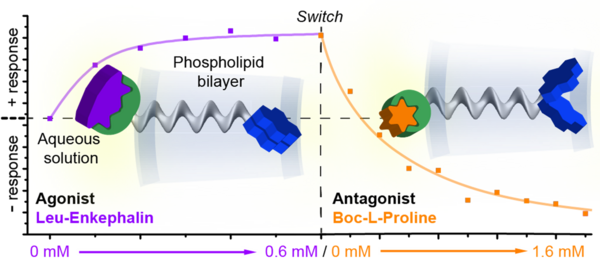Joint specialized iNANO lectures by Professor Seraphine Wegner, University of Múnster & Professor Simon Webb, Manchester University
Info about event
Time
Location
1510-213 (AUD VI, Chemistry)
Organizer
Prof. Seraphine V. Wegner, Institute for Physiological Chemistry and Pathobiochemistry, University of Münster, Germany
Synthetic Biology from the Bottom-up: Controlling Cells & Tissues with Light
Cell to cell communication determines how cells function as a community and the exchange of soluble chemical signals between cells makes it possible to coordinate the action of individual cells to gives rise to multicellular behavior. In this talk, I will present how principles of intercellular communication are applicable in the context of bottom-up synthetic biology to achieve multicellular behavior in communities of synthetic cells. In particular, I will focus on how we can control the spatiotemporal organization of sender and receiver cells with external light and show that cells can also communicate with each other through light. Using these features, we photoregulate the chemical communication depending on the spatial context of sender and receivers, attract prey cells with glowing predators and have communities that self-regulate their signaling through positive feedback loops. Further, complementary approaches pursued with synthetic and living cells allow translating concepts between different systems and integration into hybrid structures. Overall, these designs provide blueprints for light controlled and light based intercellular communication and opens new possibilities in programing synthetic and natural cell communities.
Prof. Simon J. Webb, Department of Chemistry, University of Manchester, UK
Conformationally Switchable Molecular Devices for the Transmission of Information
A key feature of biological systems is the transmission of information across multi-nanometre distances, which maintains the complex chemical networks and functions within cells. We have been exploring the use of conformational switching to mimic this behaviour and transmit information over similar distances. The molecular devices produced may have a range of applications e.g. transferring instructions within molecular factories or “short circuiting” signalling pathways in cells.
Different molecular scaffolds will be described,[1] with a focus on those using an α-aminoisobutyric acid (Aib) foldamer (folded oligomer) core. Aib-rich peptides fold into nanometre-long hydrophobic 310 helices that embed easily into bilayers.[2] Their helical conformation can be altered by a stimulus received at the N-terminus, which is then relayed to a spectroscopic “reporter” at the far end.[3] In this way we have shown that Aib foldamers can relay chemical and photochemical information over >2 nm within bilayers,[4],[5] Progress towards adding catalytic activity to these molecular devices will also be described.[6],[7]

